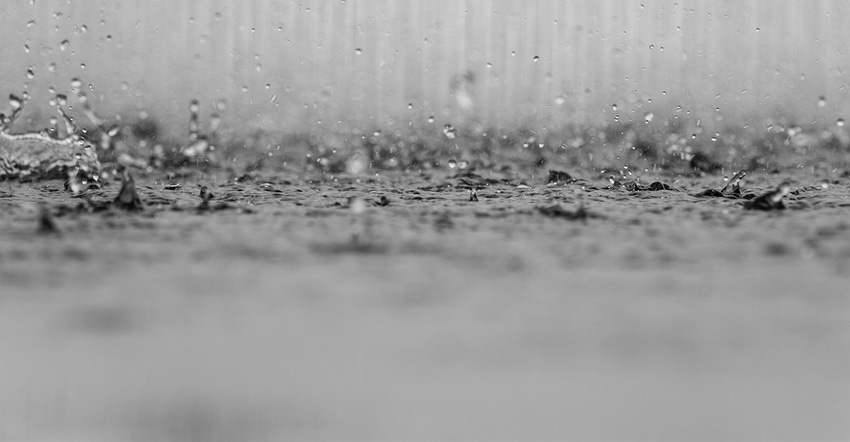June 26, 2018

Rain falling from the sky does not always reach the ground — and that affects rainfall forecasting. So, the University of Missouri has taken to estimating rainfall by droplet size.
“Farmers depend on rainfall estimates to help them manage their crops,” says Neil Fox, associate professor of atmospheric science in MU’s School of Natural Resources. “It is important to know exactly how much rain we observe reaches the ground, because that is the stuff absorbed by the soil and used later to help the crops grow.”
Rain event totals are important. Currently, forecasts generally do not account for what happens to a raindrop after it is picked up by radar, Fox says, and evaporation has a substantial impact on the amount of rainfall making it to the ground.
MU researchers developed a system that improves the precision of forecasts by accounting for evaporation in rainfall estimates, particularly for locations 30 miles or more from the nearest National Weather Service radar.
Size does matter
Fox and doctoral student Quinn Pallardy used dual-polarization radar, which sends out two radar beams, polarized horizontally and vertically, to differentiate between the sizes of raindrops.
A raindrop’s size affects both its evaporation rate and its motion, with smaller raindrops evaporating more quickly but encountering less air resistance. By combining this information with a model that assessed the humidity of the atmosphere, the researchers developed a tracing method that followed raindrops from the point when they were observed by the radar to when they hit the ground, precisely determining how much evaporation would occur for any given raindrop.
Real-world uses
According to Fox, more accurate rainfall estimates also contribute to better weather forecasts in general, as rainfall can affect storm behavior, air quality and a variety of other weather factors.
He sees this type of forecasting as a benefit to farmers dealing with irrigation decisions. Fox says it is hard to plan irrigation timing if you don’t know how much water reached the soil. This new approach could save farmers money — and could help in flood years.
“When forecasting floods, we know how much rain is reaching the surface, how much will run off into streams and cause floods,” Fox adds.
Farmers depend on rainfall estimates to help them manage their crops, so the more accurate the forecasts, the more those forecasts can benefit farmers, he adds.
Source: University of Missouri
You May Also Like




